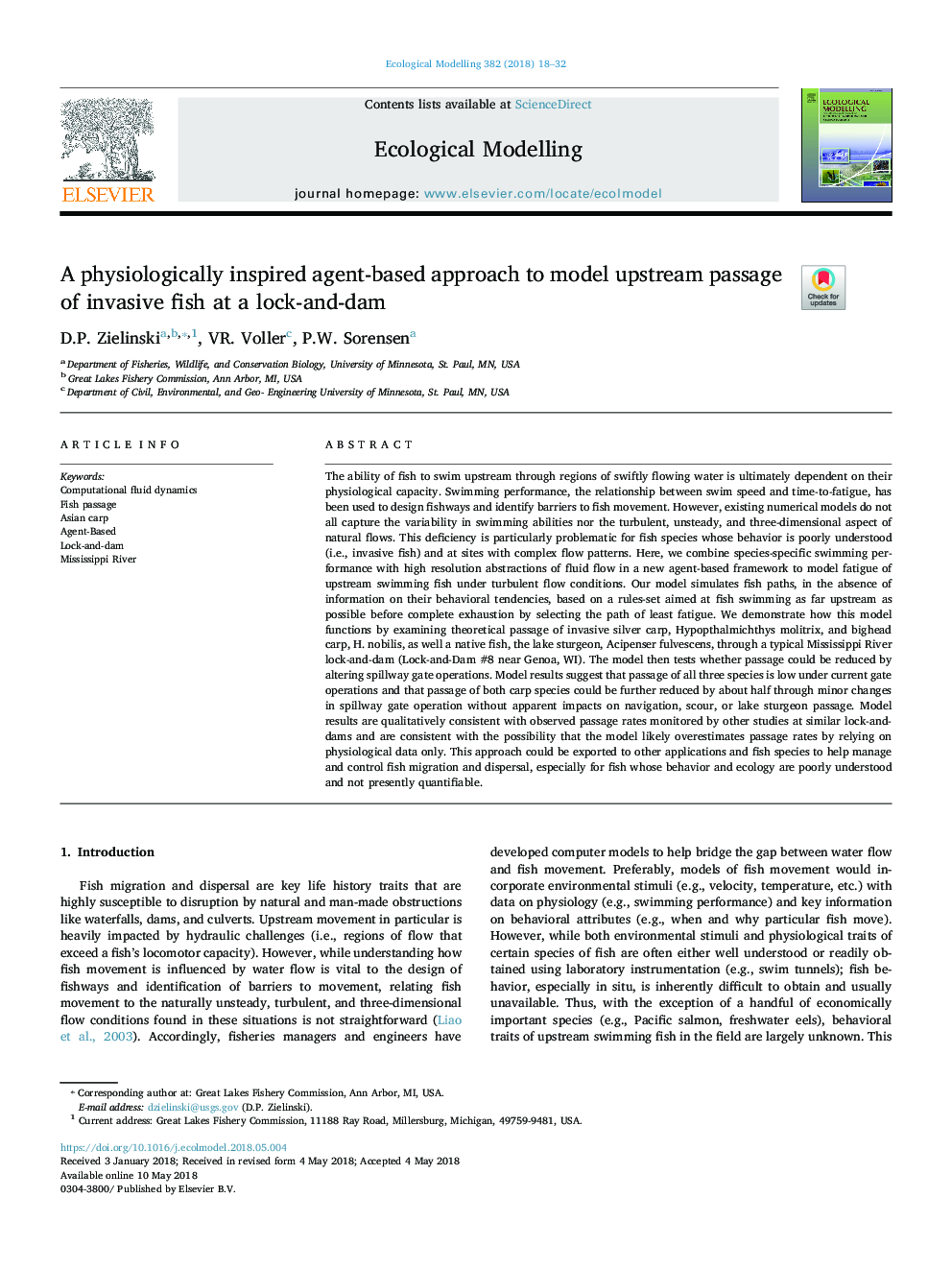| Article ID | Journal | Published Year | Pages | File Type |
|---|---|---|---|---|
| 8846025 | Ecological Modelling | 2018 | 15 Pages |
Abstract
The ability of fish to swim upstream through regions of swiftly flowing water is ultimately dependent on their physiological capacity. Swimming performance, the relationship between swim speed and time-to-fatigue, has been used to design fishways and identify barriers to fish movement. However, existing numerical models do not all capture the variability in swimming abilities nor the turbulent, unsteady, and three-dimensional aspect of natural flows. This deficiency is particularly problematic for fish species whose behavior is poorly understood (i.e., invasive fish) and at sites with complex flow patterns. Here, we combine species-specific swimming performance with high resolution abstractions of fluid flow in a new agent-based framework to model fatigue of upstream swimming fish under turbulent flow conditions. Our model simulates fish paths, in the absence of information on their behavioral tendencies, based on a rules-set aimed at fish swimming as far upstream as possible before complete exhaustion by selecting the path of least fatigue. We demonstrate how this model functions by examining theoretical passage of invasive silver carp, Hypopthalmichthys molitrix, and bighead carp, H. nobilis, as well a native fish, the lake sturgeon, Acipenser fulvescens, through a typical Mississippi River lock-and-dam (Lock-and-Dam #8 near Genoa, WI). The model then tests whether passage could be reduced by altering spillway gate operations. Model results suggest that passage of all three species is low under current gate operations and that passage of both carp species could be further reduced by about half through minor changes in spillway gate operation without apparent impacts on navigation, scour, or lake sturgeon passage. Model results are qualitatively consistent with observed passage rates monitored by other studies at similar lock-and-dams and are consistent with the possibility that the model likely overestimates passage rates by relying on physiological data only. This approach could be exported to other applications and fish species to help manage and control fish migration and dispersal, especially for fish whose behavior and ecology are poorly understood and not presently quantifiable.
Related Topics
Life Sciences
Agricultural and Biological Sciences
Ecology, Evolution, Behavior and Systematics
Authors
D.P. Zielinski, VR. Voller, P.W. Sorensen,
